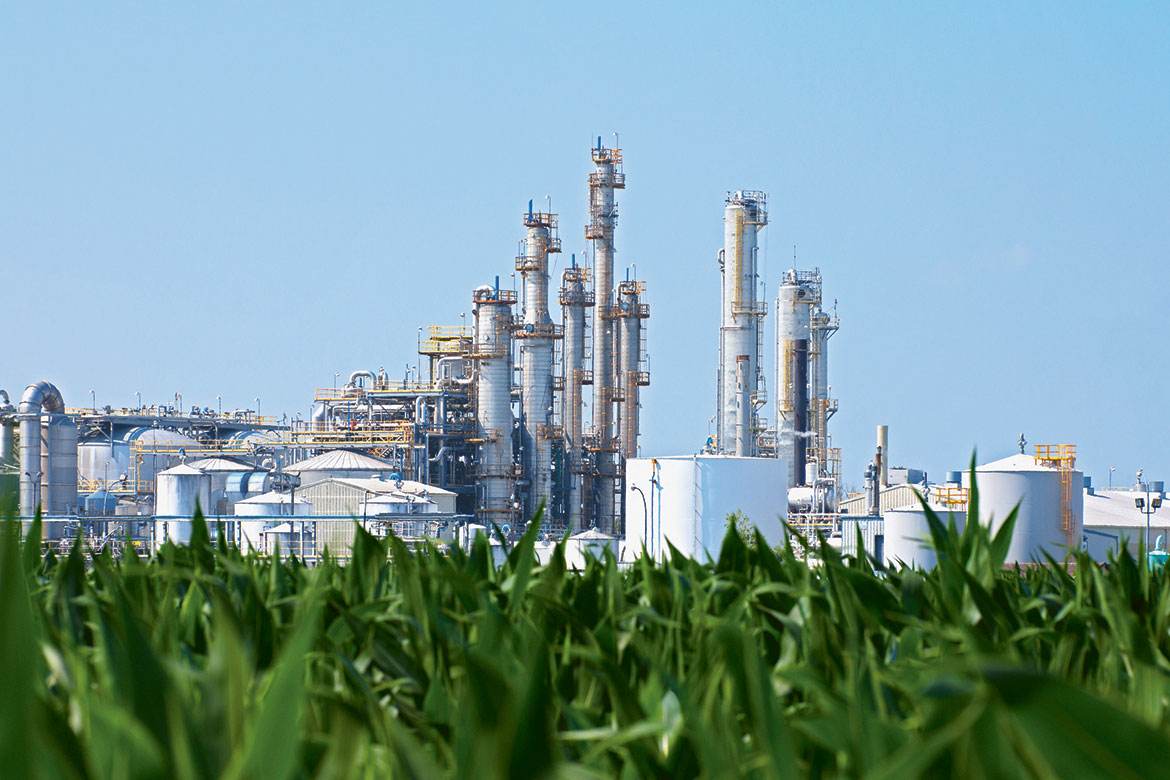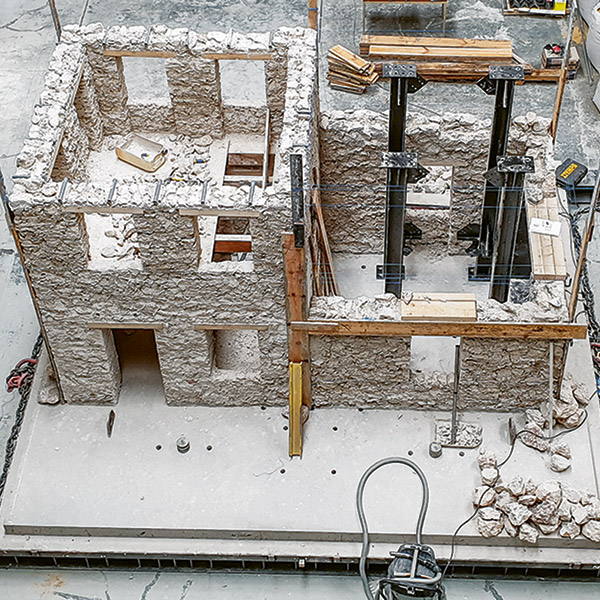Biorefineries for a future without oil
Petrol and plastics should one day be made from plant waste – in a manner that’s both economic and ecological. A new computer simulation is helping scientists to plan future refineries.

First-generation biorefineries present us with a choice: should maize land on our plates, or be turned into fuel? The second generation will change all this: they’re going to transform waste. | Image: Getty Images/SimplyCreativePhotography
Oil is what makes the modern world go around. In refineries, it’s broken down to make fuel and the basic chemicals for innumerable everyday products such as textiles, medicines and plastics. But this resource has no future. Wood is an interesting possible replacement that’s renewable and climate-neutral. It could be transformed into all the substances we need using biorefineries.
But how do you go about designing such a facility so that it’s both economic and can fulfil ecological demands? A team led by the engineer François Maréchal from EPFL is investigating how all the processes of a biorefinery might be combined in an optimum solution. As part of the National Research Programme ‘Resource Wood’ (NRP 66), he has developed a simulation program that aims to design the perfect biorefinery. Good planning is necessary because biorefineries are uncharted territory, both technologically and economically. Up to now, biofuels have been created from starch or sugar by means of alcoholic fermentation. To this end, plants such as maize, wheat and sugar cane have been used. But these are also human foodstuffs, which has created a ‘food-or-fuel’ conflict.
Hopes now rest on second-generation fuels that can be produced exclusively from wood waste or other plant waste. But this is immeasurably more difficult because wood is a complicated chemical mixture of cellulose, other sugar chains and lignin. It will be the job of biorefineries to transform these organic compounds into the desired fuel by chemical means.
Tentative industry
There are several challenges involved here. Constructing such a refinery will mean developing completely new chemical procedures that will differ from those of traditional refineries. But these procedures are still at an early stage of development. They’re being used in labs or small test facilities, and have barely been tested up to now on an industrial scale. And because experience is lacking, it’s also economically risky. Some companies have already given up trying to produce biofuel from wood or plant waste. The process was too complicated, the raw materials were too expensive, and oil was still too cheap to make it worthwhile – not least because of the fracking boom in the USA.
François Maréchal’s approach is different. He doesn’t just want to produce biofuel alone, but to use biorefineries to produce basic materials for the chemical industry too. “We are trying to copy a normal refinery”, says Maréchal, “but one in which wood happens to be the raw material”. This means creating new processes. Wood will be transformed in two main steps – a biochemical process and a thermochemical one (see “Heating wood”).
But what kinds of fuel and chemical are best made from wood so as to produce viable goods for the market? Maréchal feeds in all the cost factors for equipment, raw materials, energy, water and reagents. Then he calculates the possible profit for the most varied combinations of chemicals and fuels. The economic winners for a mid-size, 200-megawatt refinery are succinic acid, and dimethyl ether for diesel engines. “Succinic acid is the basis for different products in the chemical and pharmaceutical industries and bioplastics”, says Maréchal. The US Department of Energy regards it as one of the ten biorefinery products with the biggest potential. “It’s the most lucrative to produce by biochemical means. With this, we’d straightaway have market viability”.
Four processes in one reactor
Unlike an oil refinery, a biorefinery mustn’t just make economic sense. It also has to be environmentally friendly and conserve as much carbon dioxide as possible. Even though trees bind the carbon dioxide that is later set free by vehicles, the transformation of wood into fuel needs extra energy. Furthermore, different fuels burn with different degrees of efficiency. So Maréchal is also carrying out ecological simulations. As a result, he has ascertained that it would be best if the biorefinery only produced a natural gas substitute (synthetic natural gas) and diesel. “Ultimately, we’ve achieved a compromise between economy and ecology”, says Maréchal. So the winners are: succinic acid and synthetic natural gas.
Maréchal’s work is already being put into practice. As part of NRP 66, Michael Studer from the Bern University of Applied Sciences has developed a pilot plant in the canton of Jura that aims to produce ethanol from wood waste. Studer is keeping Maréchal’s twin-track strategy in mind, but initially he just wants to have fuel as his only end product, adding other production chains at a later date. Studer is putting his hopes in the highly integrated process design of his plant: “Four processes that normally run serially are taking place here in a single reactor”, he says. Given that a third of the price obtained for ethanol is needed to offset the high investment costs, Studer hopes to make drastic savings.
Studer had to start from scratch when designing the plant. “You can’t transfer standard procedures to a Swiss context. We simply don’t have the same volume of biomass that you find in the USA or Sweden”. So high investment costs can’t just be absorbed by higher production levels. The wood waste will come from a factory to be built by a timber company that is also involved in Studer’s pilot plant. “Only 60 percent of the beech wood is used for production; the rest goes into the energy industry”, says Studer. But they can’t produce that many wooden pellets for heating purposes. That’s why they had the idea of combining the production plant with the biorefinery.
Not everyone is convinced by the concept. Philip Hasler works for the investment company Emerald Technology Ventures, and he’s been observing the market for many years. He doesn’t see many market opportunities for biofuels from wood or plant waste. “The technology is highly complex, capital-intensive and untested. The profit margins are very small”. It’s possible that people are also backing the wrong horse. Given the strong growth of electromobility, the demand for biofuels – says Hasler – might actually diminish in future.
“In order for a biorefinery to be run economically, it needs higher-quality products than just fuels, and it needs to utilise all components of the biomass if possible”, says Hasler. Succinic acid is a good product: “It creates revenues three to four times higher than biofuels”. But the market for succinic acid isn’t yet so well developed, he says, and demand is still too low. All the same, Hasler thinks a biorefinery could result in other highly promising products – maybe nutritional supplements such as thickening agents, modified sugars, or cellulose fibres for textiles or composite materials.
Jens Lubbadeh is a freelance journalist who writes for the Neue Zürcher Zeitung, Technology Review and elsewhere.




